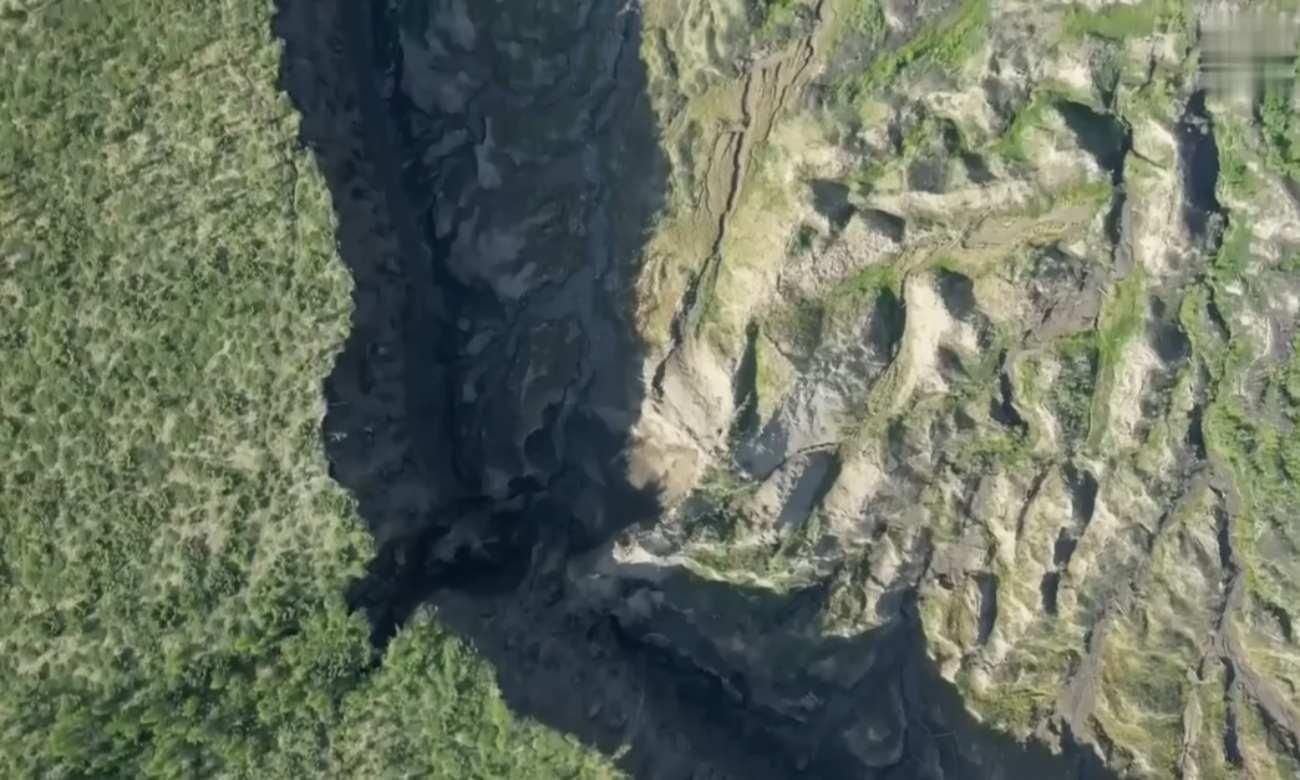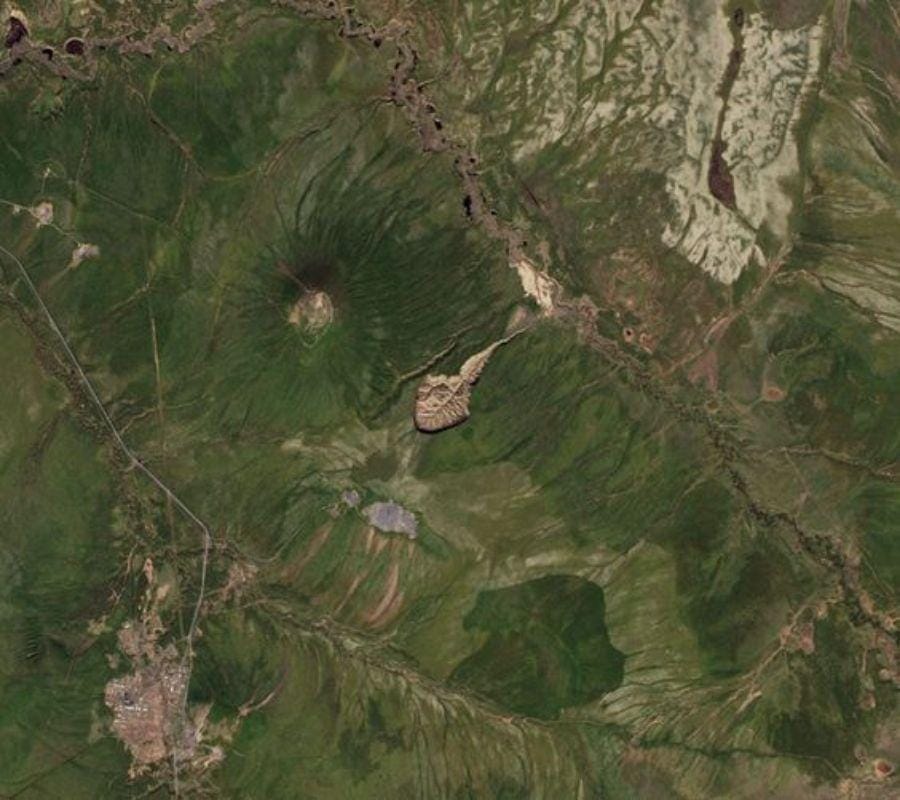Drone captures rare footage of mysterious ‘Gateway to the Underworld’ in Siberia
Reports show that Siberia’s permafrost might melt as global warming worsens, causing unexplained sinkholes and gas eruptions. The Batagaika crater, sometimes called the ‘doorway to the underworld,’ is the most notable. Its fast growth has revealed long-buried woods, corpses, and priceless climatic records going back 200,000 years.
This enormous depression is about two-thirds of a mile long and 300 feet deep. It grows on average 30 feet each year, making it a “thermokarst” or “megaslump,” according to scientists. Unfortunately, it is dangerous because it unleashes prehistoric carbon reserves and thaws frozen pathogens.
The Scope of the Batagaika Crater
The size of this natural occurrence was recently revealed by a drone flown down into the crater. Siberia has seen the emergence of numerous “mega slumps, ” but Batagaika stands out due to its size and location, about 410 miles northeast of Yakutsk.

Source: Russian MoD/YouTube
The permafrost thawed after nearby forests were cleared in the 1960s when the crater was first formed. Growing permafrost is made possible by ongoing melting. According to geographers, the crater’s predicted continued growth presents a difficult situation with potential long-term repercussions.
A Trip Down Memory Lane
Batagaika gives priceless insights into the history of Earth despite the risks posed by its instability. According to research published in February 2017, the crater’s exposed layers might provide 200,000 years’ worth of climatic information.

Source: Russian MoD/YouTube
The land mass houses pollen samples, musk ox, mammoth, and 4,400-year-old horse skeletons, as well as ancient woodlands. Studying this wealth of historical data makes us better prepared for future difficulties.
Concerns Over Carbon Release and Ancient Viruses
Concerns about releasing carbon reserves frozen in permafrost for millennia mount as the depth of the Batagaika crater increases. Permafrost thawing may liberate organic matter that has been stored, enhancing the greenhouse effect and accelerating global warming.

Source: Atlas Obscura/Pinterest
In addition, when Siberian permafrost thaws due to climate change, ancient viruses emerge from the region’s frozen soil, creating health dangers. The release of these viruses provides fresh difficulties for human populations.
A Ray of Hope in Understanding Earth's Past
Despite its difficulties, Batagaika has a lot to offer science. Exposed strata provide a rare view into 200,000 years of climate data, and can help uncover Earth’s past temperature changes.

Source: Russian MoD/YouTube
Pollen samples, old trees, and well-preserved relics provide insight into previous ecosystems. Forging a sustainable future requires an understanding of our planet’s history. We can lessen climate change effects and protect the environment for future generations by conducting responsible research and making worldwide efforts.
